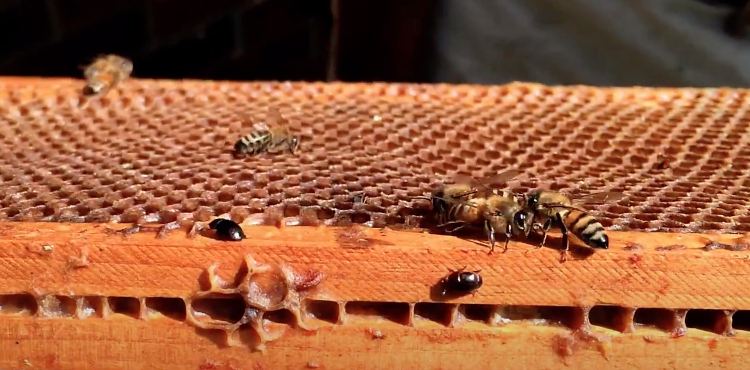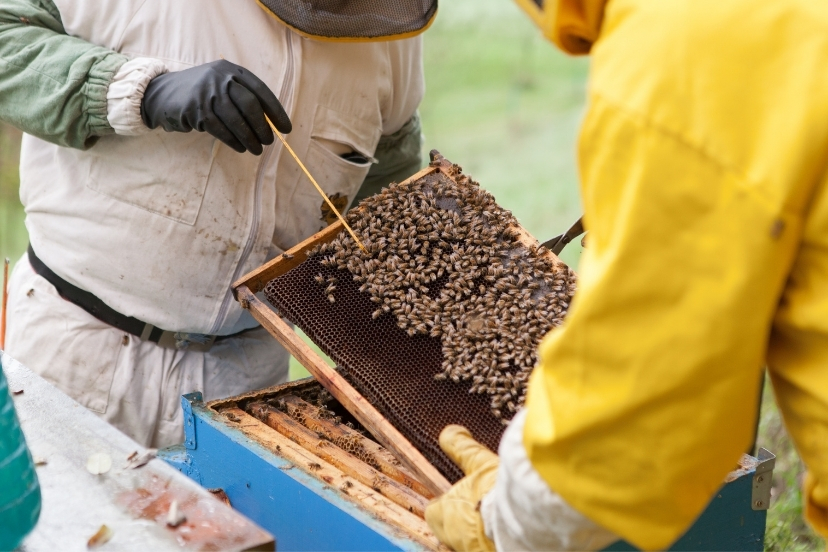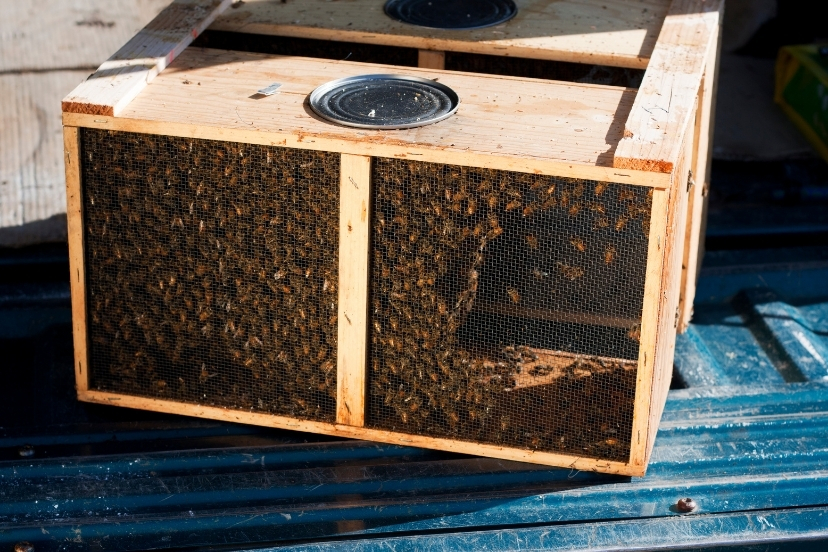The small hive beetle is a honey bee pest that is relatively recent to North America. The hive beetle originates in South Africa, where it is not a major problem because the aggressive African bees keep it in check. But the bees of European ancestry that predominate in the Americas are not well equipped for dealing with this relatively new pest.
Hive Beetles Are Usually Kept Under Control By Strong Colonies
Very strong colonies can normally keep the hive beetle in check. They can do this by actually herding the beetles into groups within the hive, and containing them there. The bees will even construct little ‘jail cells’ of propolis, and station guard bee jailers to keep the beetles imprisoned and unable to lay eggs.
Weaker Colonies? Not So Much…
Weaker, smaller colonies are vulnerable to being overwhelmed by the beetle. In fact, in some cases hive beetle infestations can become so bad that the bees abandon their hive in desperation (called absconding), and try to start again elsewhere. The hive beetle is a tropical insect, and prefers regions with mild winters.
The Hive Beetle Life Cycle
Adult hive beetles are attracted to colonies in distress by homing in on the alarm pheromone that honey bees release when they are disturbed or provoked.
Female beetles lay eggs in nooks and crannies within the hive where the bees can’t get to them. When the eggs hatch, the larvae make their way to the combs and feed on the stored honey and pollen.
As the larvae mature, they leave the hive and burrow into the soil close by (they prefer sandy soil), where they pupate and become adults.
As shown in the video above, small hive beetle larvae can create a hideous mess in a hive, transforming combs into a slimy mass of fermenting honey and defecating larvae.
Small Hive Beetle Controls
Chemical treatments for hive beetles come in one of two options:
Treatments within the hive focus on killing adult beetles by exposing them to pesticides in a confined space too small for honey bees to enter.
Outside treatments target the larvae outside of the hive. The chemical is sprayed on the ground surrounding the hive, and kills the larvae when they leave the hive to pupate in the soil.
Non-chemical control of the hive beetle involves some form of trapping. There are several in-hive options available to beekeepers.
Some small hive beetle traps are designed for use inside the hive, on or in between frames of comb. And there are several versions of screened bottom board traps designed to replace the traditional solid bottom board.
Most traps use vegetable oil to kill the beetle once it has entered the trap. The traps need to be monitored, and the oil and dead beetles frequently discarded and replaced with fresh oil.
Small Hive Beetles Can Also Be A Problem OUTSIDE The Hive…
Beekeepers that have hive beetles in their hives, even in small numbers, should be wary when harvesting honey from their hives. Honey supers that are removed from the hive containing beetle larvae can be completely destroyed within just a few days.
Free from interference from the bees, the hive beetle larvae will have a full-scale slimefest in harvested supers of beautiful honey, transforming the honey into unsalvageable garbage in a short time. Unless it’s known for certain that harvested honey supers are beetle-free, the honey should be extracted from the supers quickly after removing them from the hive.



